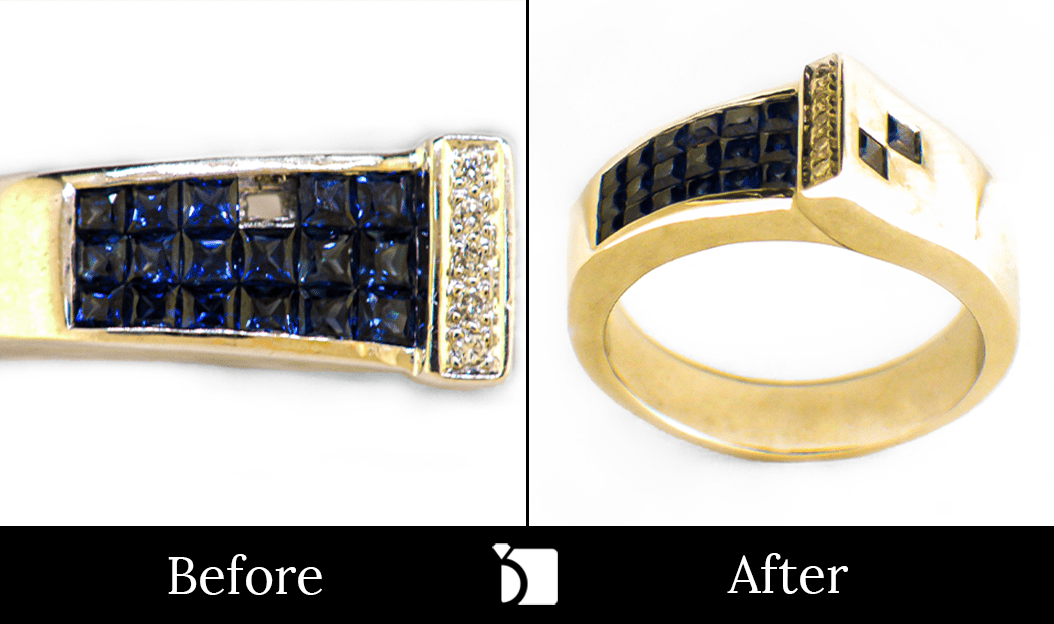
Everything you need to know about SAPPHIREs
Unlock the timeless allure of rubies with our Ultimate Sapphire Guide – your definitive resource for everything you need to know about these captivating gemstones!

The Ultimate Guide to Sapphires
Stunning Sapphires: More Than Just a Pretty Gemstone
Sapphires, the gemstone of wisdom and royalty, are celebrated for their remarkable hardness and rich, captivating colors, most famously the deep blue but also found in shades of pink, yellow, and green. Across cultures, sapphires are revered as symbols of protection, believed to bring peace, mental clarity, and spiritual enlightenment. In medical astrology, wearing a sapphire is said to strengthen the mind, improve focus, and bring balance to one’s life.
At My Jewelry Repair, our love for sapphires inspired us to create this Ultimate Sapphire Guide. We hope you find this guide to be an informative and comprehensive resource, whether you’re shopping for sapphires or caring for the ones you already own.
“A kiss on the hand may feel very, very good, but a diamond and sapphire bracelet lasts forever.” – Anita Loos
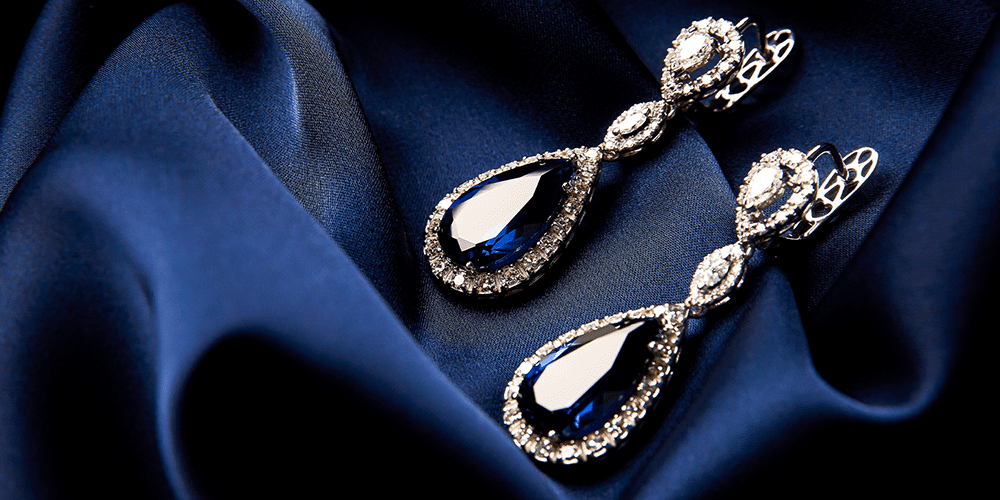

What Features Should We Look for in a Sapphire?
What Makes a Remarkable Sapphire?
Sapphires are among the most expensive gemstones. They are often subjected to more treatments than almost any other gemstone.
The Four C’s
When discussing the anatomy of a ruby, we turn to the 4 C’s:
CUT
- The cut of a sapphire is crucial to its overall appearance and value, affecting how the gemstone’s color, brilliance, and unique characteristics are displayed.
- Sapphires are typically cut to maximize their color, minimize the appearance of inclusions, and enhance their symmetry and brilliance, even if precision is sometimes sacrificed to preserve more of the valuable rough material.
- A quality cut in a sapphire balances factors such as proportion, symmetry, and polish, enhancing the stone’s natural beauty and making it a standout piece in any jewelry collection.
- Key aspects of a sapphire’s cut, such as table size, girdle thickness, and the overall cut grade, determine its brilliance and visual appeal, contributing significantly to its value and desirability.
CLARITY
- Inclusion-free sapphires are extremely rare, and experts generally expect to find some inclusions in natural sapphires.
- The value of a sapphire is significantly influenced by the size, location, and visibility of these inclusions.
- Inclusions that reduce a sapphire’s transparency or brilliance can lower its value, while those that are less noticeable may not have as significant an impact.
- The clarity of a sapphire is a testament to its natural formation and adds to its unique character, with “eye-clean” sapphires being especially rare and highly valued.
CARAT (WEIGHT)
- Sapphire size can vary significantly in terms of weight and density, with larger sapphires being much harder to find than smaller ones.
- While sapphires come in a range of sizes, fine quality sapphires over one carat are especially rare and highly prized, with prices increasing steeply at the one, three, five, and ten-carat levels.
- The larger the sapphire, the rarer and more valuable it becomes, particularly for blue, pink, orange, or padparadscha sapphires that exceed fifteen carats.
- It’s not just the size that matters; the quality, color, and cut of the sapphire also play crucial roles in determining its overall worth.
COLOR
- Color is a key factor in determining a sapphire’s value, with blue being the most iconic and desirable hue.
- The finest blue sapphires have a vivid, intense blue color, often with a slight violet-ish tint.
- Sapphires with secondary hues like greenish-blue or grayish-blue, or with very dark or diluted tones, are generally lower in value.
- The richness and purity of a sapphire’s color greatly influence its appeal and price, making it one of the most sought-after characteristics.
In summary, when choosing a sapphire, consider the cut, carat, clarity, and color to find a gemstone that is not only beautiful but also a true reflection of its remarkable qualities.
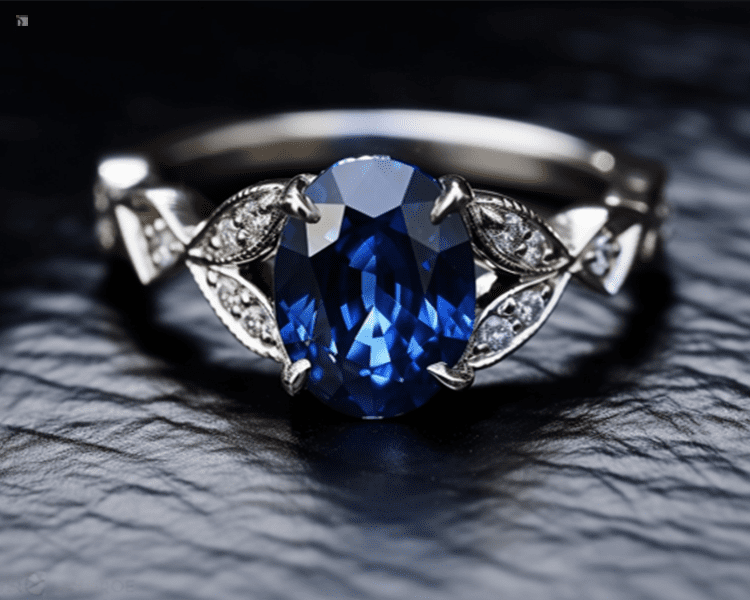
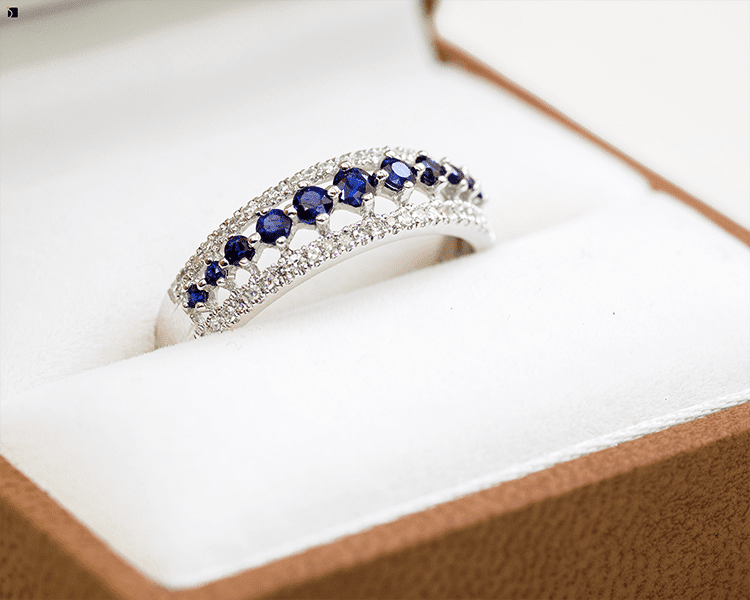

Natural vs. Lab-Created Sapphires
The “Real” and the “Fake” of Sparkle & Brilliance
An important trend in the jewelry industry is the rise of lab-created gemstones, and sapphires are no exception.
What is Considered “Real” and What is Considered “Synthetic” When it Comes to Sapphires?
Lab-created sapphires have become increasingly common, offering a more affordable alternative to natural sapphires. These synthetic sapphires are made through processes like melt (melting aluminum oxide into a sapphire droplet) or solution (growing sapphire crystals in a specific solution), replicating the natural conditions under which sapphires form.
Interestingly, natural and lab-grown sapphires are composed of the same materials, sharing the same atomic structure and crystal habit. Both are recognized by gemology labs as forms of corundum, making them nearly identical in composition.
Lab-created sapphires tend to be more affordable and often more durable due to their controlled creation process. However, despite these advantages, natural sapphires remain more desirable, and there is no sign of this preference changing in the foreseeable future. The differences between lab-created and natural sapphires are subtle and often require expert analysis to distinguish.

The Features and Colors of Sapphires
Exploring the Features of Sapphire
The one and only birthstone associated with the month of September is the sapphire.
The name “sapphire” originates from both the Latin word “saphirus” and the Greek word “sapheiros,” both of which mean “blue.”
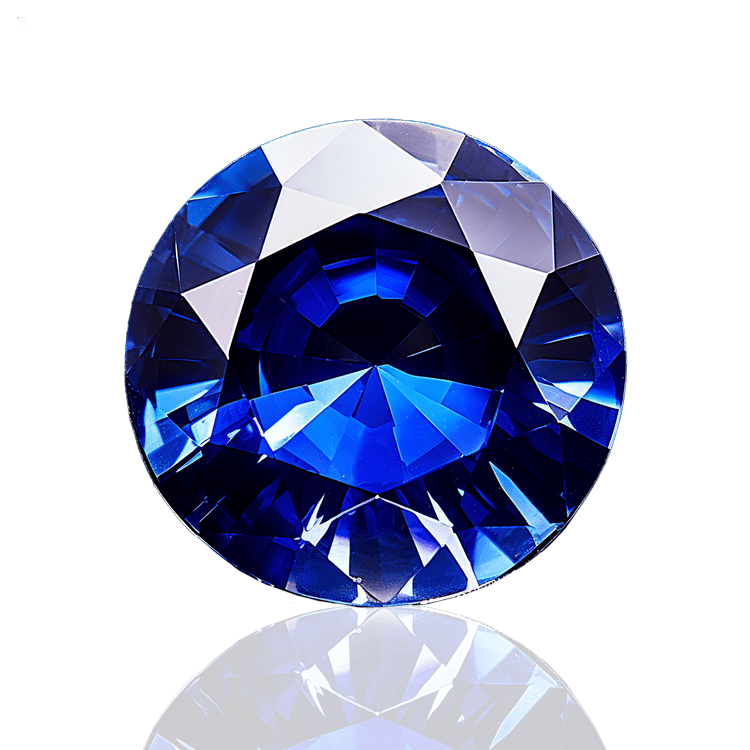
Sapphire is one of the four most famous precious gemstones, alongside emeralds, rubies, and diamonds. For many centuries, this gemstone has been adored and prized for its vivid, pure blue color. Interestingly, this well-known blue hue actually stems from the presence of titanium; the higher the amount of titanium in the gemstone, the more saturated and blue it becomes.
Sapphire is one of the most valuable and expensive gems in the world.
The durability of sapphire ranks close to diamonds on the Mohs Hardness Scale, making it a desirable choice for crafting fine jewelry. Due to their lustrous appearance and exceptional hardness, sapphires have been sought after for centuries, often incorporated into royal jewelry collections across the globe and throughout history.
However, the valuable blue sapphire isn’t the only color in existence. While sapphires are most commonly associated with their striking blue hue, they can be found in virtually every color, including yellow, purple, orange, peach, green, pink, and more!
These gemstones, made up of aluminum oxide with trace amounts of elements like titanium, chromium, iron, magnesium, or vanadium, exhibit a wide range of colors with the exception of red. This particular gemstone can also exhibit special varieties, such as the “star effect” phenomenon. The star effect is caused when light hits the gemstone’s inclusions at the right angle, creating a star pattern of shine and brilliance. Sapphires are also similar to gemstones such as alexandrites in their ability to appear to change colors in different lighting.
Sapphires Versus Rubies
Sapphires belong to the corundum family, a group of minerals known for their remarkable hardness and variety of colors. The only exception is red corundum, which is classified as a ruby, another precious gemstone renowned for its deep crimson color.
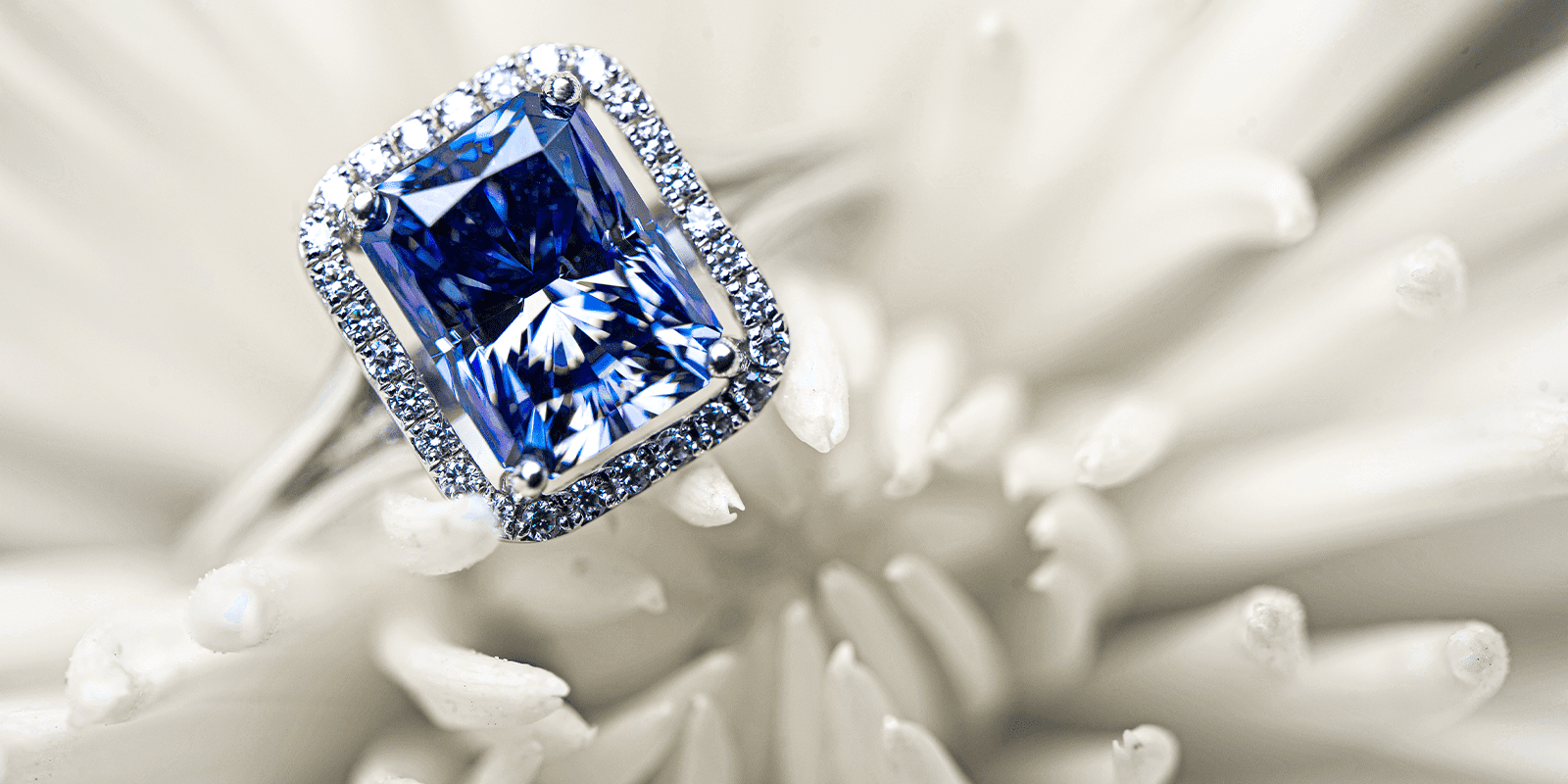
The Rich History and Deep Symbolism of Sapphire
Cultural Significance and Fun Facts: Sapphire in Lore and Legend
Let’s dive deep into the history of sapphires! Sapphires were first discovered in Kashmir around 1881. During this time, somewhere high in the Himalayas, a landslide exposed large deposits of these gemstones. The Maharaja of Kashmir took his army and seized control of the surrounding lands, discovering thousands of sapphires from 1882 to 1887.
There are two other important locations in sapphire history: Myanmar and Sri Lanka. In Myanmar, small deposits of sapphire occur within the mountainous landscape, alongside bountiful ruby deposits. In Sri Lanka, sapphires have been mined and discovered for over 2,000 years. Those who mine gemstones in Sri Lanka, referred to as the “jewel box of the Indian Ocean,” are also able to heat-treat the island’s milky white geuda sapphires to achieve a rich blue color.
Other locations where sapphire gemstones can be found include the United States, Australia, Cambodia, Madagascar, and Thailand. Among these, Sri Lanka, Madagascar, Thailand, and China are particularly abundant sources of sapphires.
Sapphires have long symbolized royalty, nobility, truth, faithfulness, and sincerity. In ancient times, they were also considered protective gemstones, shielding the wearer from the harms of envy, war, and plagues. Apollo, the Greek god of the sun, was honored with offerings of sapphires brought to temples by believers praying for the healing of the sick.
In other cultures, sapphires were worn by royalty and clergy. In the Middle Ages, clerics wore this gemstone as they associated it with heaven, believing it would help them resist temptation and sin. Even Ancient Hebrews believed that the Ten Commandments were written and engraved on stone tablets made of sapphire, though this belief is subject to debate.
In Ancient Persia, people believed that the sky was blue because the earth rested upon a giant sapphire. They also hailed the gemstone as the ‘Celestial Stone,’ believing that the sapphire possessed great spiritual powers.
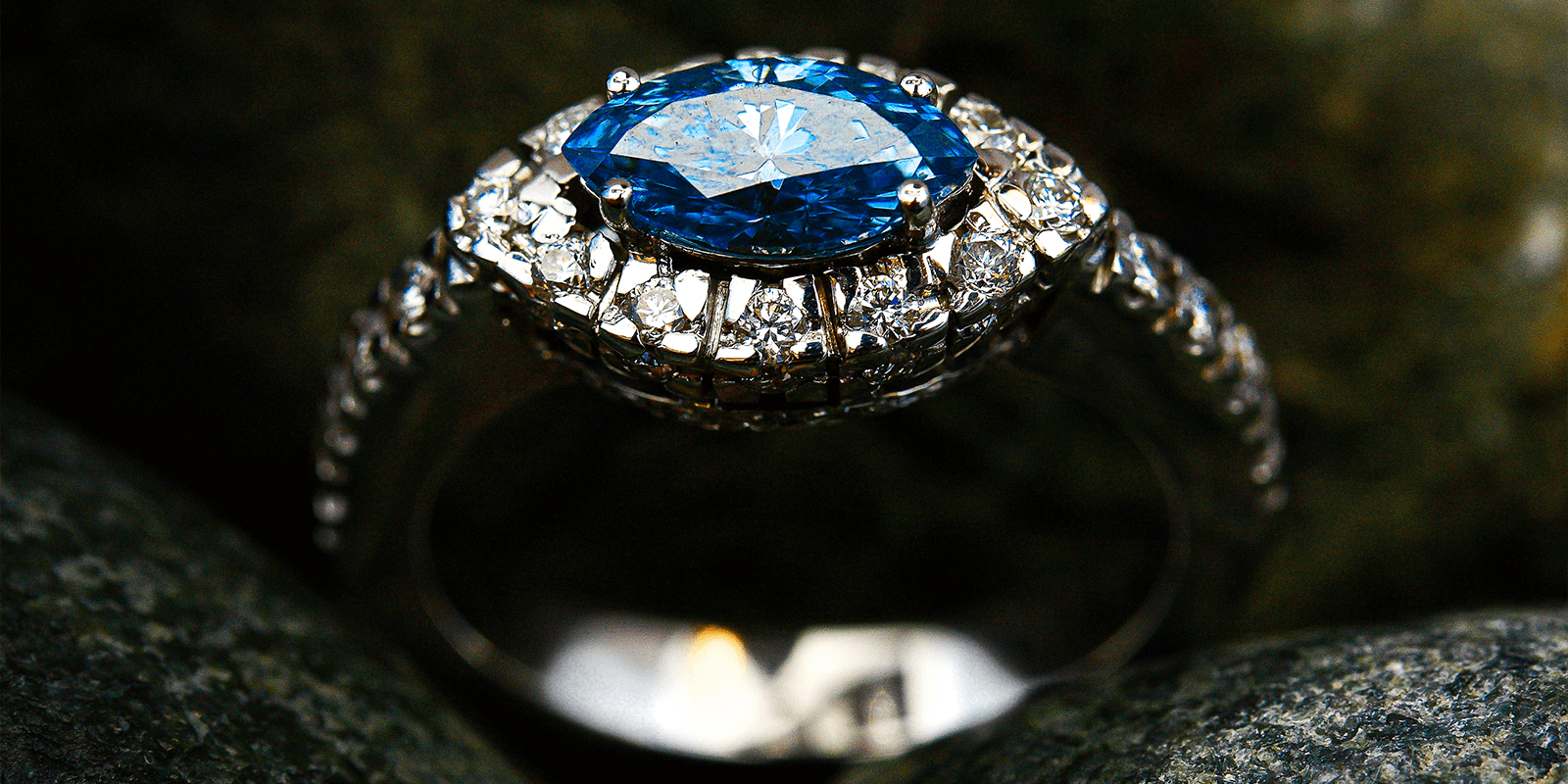

Picking the Perfect Sapphire for Your Jewelry
Sparkle and Brilliance to Fit Your Personality
When selecting the perfect sapphire for your jewelry, it’s essential to consider not just the four C’s—Color, Clarity, Cut, and Carat—but also the specific characteristics of the piece of jewelry you’re creating. Sapphires come in all shapes, sizes, and colors, so weighing all your options is key to finding the right one.
Here are a few important questions to guide your decision:
- What type of jewelry are you adding the sapphire to? Is it going to be a ring, necklace, earrings, bracelet, or even a brooch? The type of jewelry can influence the best size and shape of the sapphire.
- What type of precious metal is your jewelry composed of? The metal can affect how the sapphire’s color and brilliance are perceived, so consider how the stone will complement or contrast with the metal.
- What cut will end up looking the most fabulous in your jewelry’s setting? The cut should enhance the sapphire’s natural beauty and fit perfectly within the design of your jewelry.
- Will the sapphire be a solitaire, or will it be accompanied by side-stones? Deciding whether the sapphire will stand alone or be complemented by other stones can impact both the design and overall visual impact of the piece.
Additionally, it’s important to remember that sapphires are assessed differently than diamonds, and the country of origin can also play a significant role in the stone’s value and appeal. While sapphires can come in every color except red, the most prized ones are a vivid blue, occasionally tinged with a hint of violet.
With sapphire being the gemstone associated with the 5th and 45th wedding anniversaries, this stone of royalty and faithfulness makes a great gift for those celebrating these milestones, as well as for a September birthday. Answering the questions above will help you find the perfect sapphire for your setting.
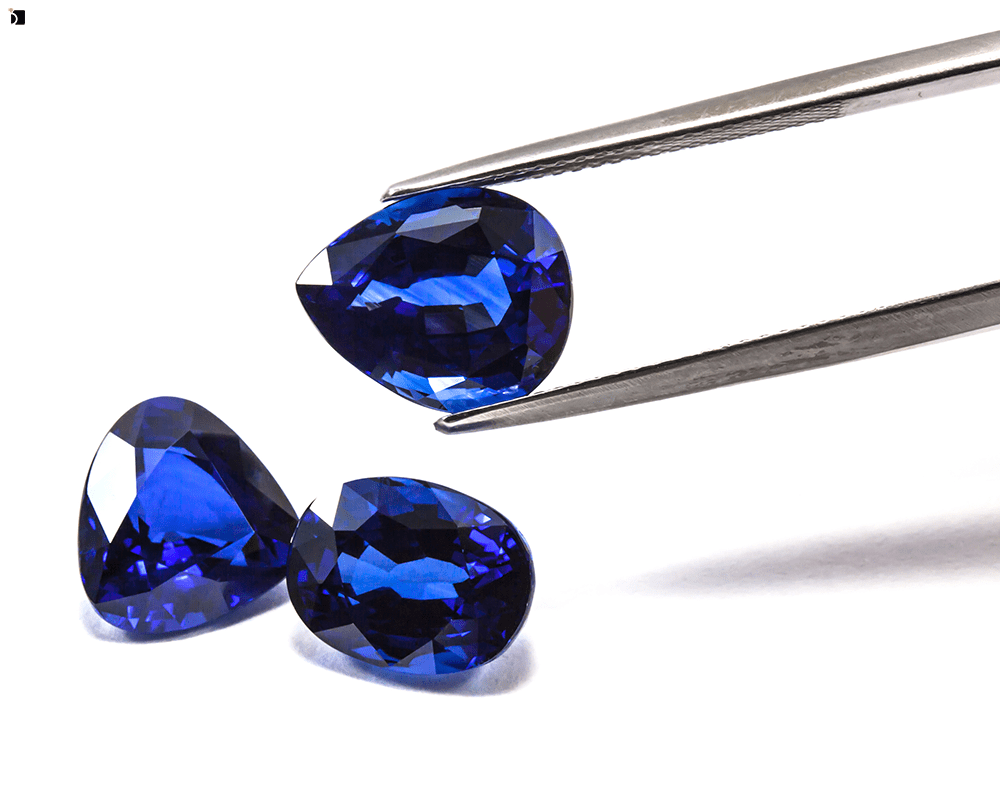
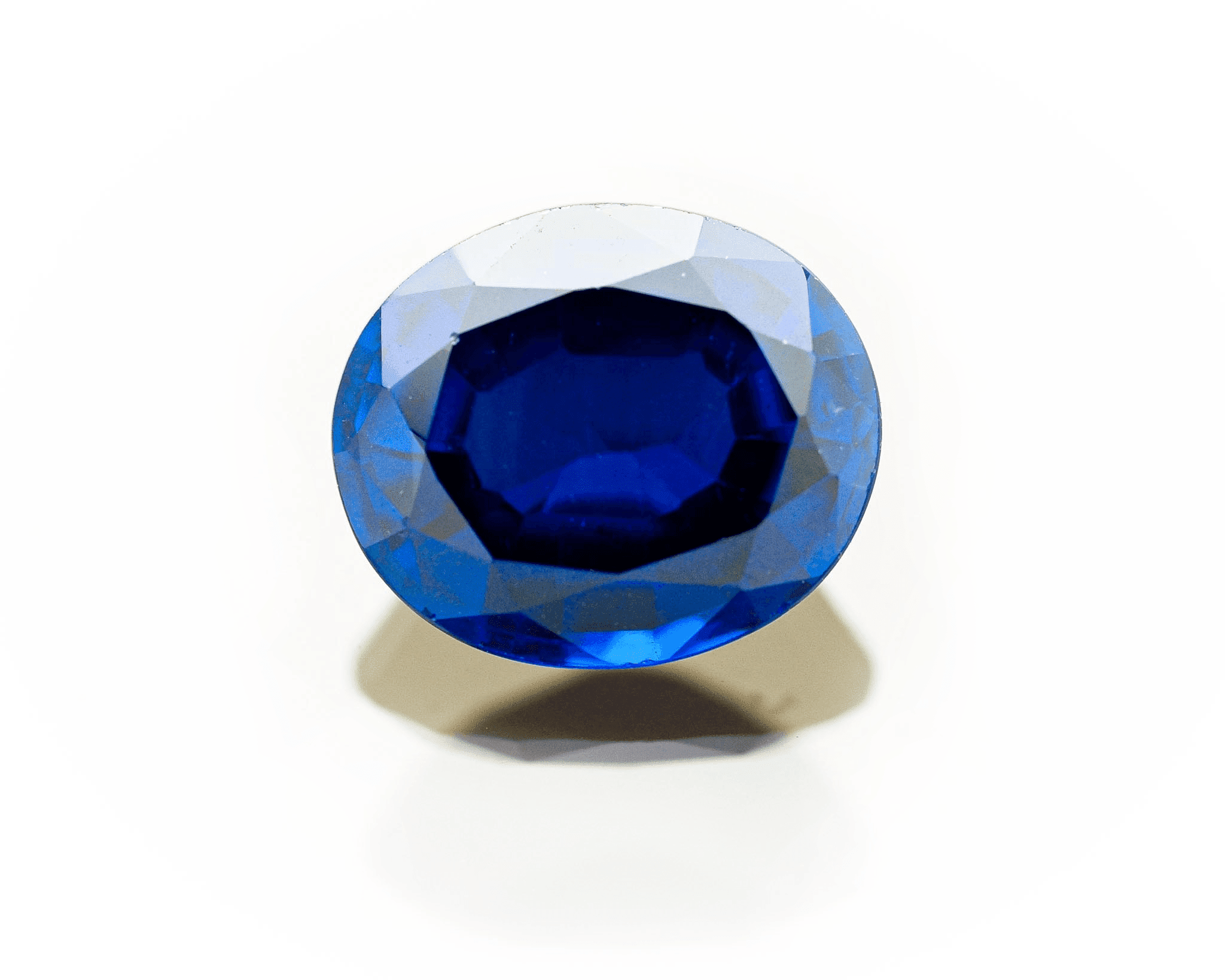

Essential Tips for Maintaining and Caring for Your Sapphires
Keeping the Sparkle and Brilliance
Sapphires have a hardness of 9 on the Mohs scale, making them one of the hardest colored gemstones and the second hardest when including diamonds. To put this in perspective, quartz has a hardness of 7–7.5 and is present in the particles of dust seen floating in the air and settling on uncleaned objects in your home. These particles are hard enough to remove the polish from your table and the finish from your car. Diamonds, with a hardness of 10, are the hardest gemstones, while the softest include talc, which can even be scratched by a fingernail.
Minerals can only be scratched by those with a higher hardness level, so sapphire owners don’t need to worry too much unless diamonds are involved. However, your precious gemstones still deserve care and maintenance to keep them looking as sparkly and pristine as possible.
Durability and Everyday Wear
Sapphires are tough and lack cleavage, meaning they do not have a tendency to break when struck. This makes sapphires a fantastic choice for everyday jewelry, such as rings, which are subject to a bit of wear and tear. Sapphires are also resistant to light, heat, and common abrasive chemicals, making them well-suited for regular use.
Cleaning and Maintenance Tips
Maintaining the sparkle and brilliance of your sapphire is relatively simple. Routine cleaning is key, and here’s a recommended step-by-step process:
- Regular Cleaning: You can clean your sapphire jewelry once or twice a week. Soak your sapphire jewelry in a mild degreasing solution. Warm water with a couple of drops of dish-washing liquid works well.
- Gentle Brushing: After soaking your sapphire jewelry, use a soft brush to clean it. Work in gentle circular motions instead of hard back-and-forth scrubbing, paying special attention to hard-to-reach places.
- Rinsing: After cleaning, rinse your sapphire jewelry with warm water. If cleaning over a sink, be sure to cover the drain to prevent accidental loss.
- Drying: Finally, dry your jewelry with a soft, lint-free cloth.

What to Avoid
While sapphires are durable, there are a few substances to avoid. Stay away from boric acid powder, which can scratch the surface, even with untreated stones. Lemon juice can also damage stones that have fractures and cavities. Additionally, avoid using toothpaste for cleaning, as it can damage your jewelry.By following these tips, you can ensure that your sapphires remain as brilliant and beautiful as the day you first wore them.
A Step Further in Sapphire Jewelry Care
We recommend professional cleaning, polishing, and inspection of your sapphire jewelry every six months. My Jewelry Repair is your go-to source for these services. We will also inspect the setting to ensure your jewelry remains in excellent condition. Let us help you keep your sapphires looking brand new.
Visit our Jewelry Clean & Polish page for more information or to create your first repair order.
Originally Published January 17, 2022, Updated and Revised September 5th, 2024

Revive Your Treasured Sapphire Jewelry
Are you considering the restoration of a beloved piece of sapphire jewelry? You’ve found the perfect place to revive cherished memories.
Sapphires breathe life into any piece of jewelry but are also prone to wear and tear. Whether you’re dealing with a loose, lost, or scratched sapphire, we take the revitalization of your precious items to heart. No matter the damage, we are committed to making your sapphire jewelry shine as brilliantly as the day it was first worn.
Our team of specialists is equipped to meticulously source the precise type of sapphire needed for your valued piece. We recognize that each gemstone is unique and demands careful, specialized attention. Our Professional Stone Sourcing team ensures that every replacement stone matches the original in quality and fit.
Explore our Sapphire Replacement Services page to learn more about how we can help restore your sapphire jewelry to its former glory.
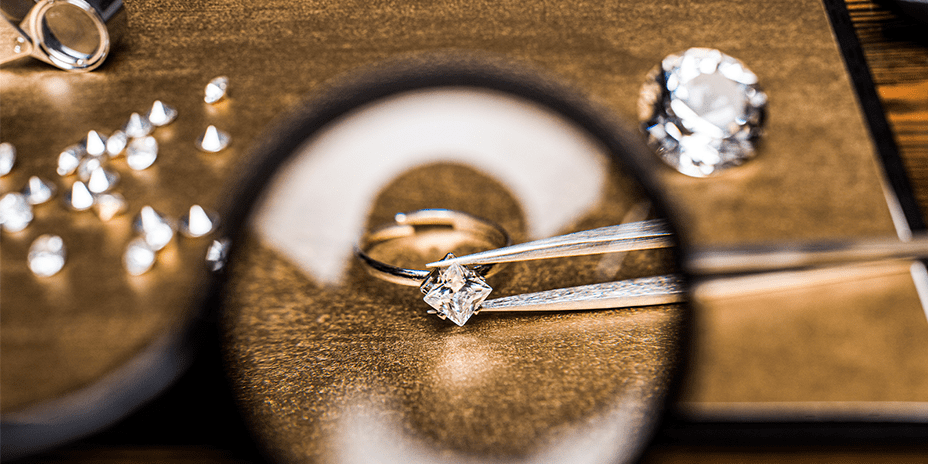

Resources:
- September Birthstone Information: https://www.americangemsociety.org/
- September Birthstone Information: https://www.gia.edu/
- September Birthstone Information: https://www.gemsociety.org/
- Blog outline and revising assisted by AI resources such as OpenAI.
Have Questions?
Clean & Polish Services
A basic clean, polish, and inspection is part of the routine care and maintenance needed to keep your jewelry looking like new. The inspection process includes looking for loose stones, bent prongs, and any damage to the metal or stones that need to be repaired.”
Stone Setting Repair
“A stone setting repair can be a simple re-tipping of a worn prong (which is considered routine care and maintenance) or the complete rebuilding/replacing of a damaged prong. In the case of severe damage, the entire head of the ring may need to be replaced.
Regardless of whether or not the prongs are compromised due to normal wear and tear or a result of accidental damage, we can provide the routine care and maintenance in order to ensure you do not lose a stone in your setting.”
Sapphire Replacement Services
“The process of a Sapphire Replacement is simple enough, yet requires trained eyes to be able to make a flawless switch. We aim to leave no trace of our work, which means not only will your setting be perfected, but the emerald we choose will complete your jewelry piece effortlessly.”
Invisible Setting Repairs
“A centuries-old, originally French technique, invisible set gemstone jewelry (aka the Invisible Setting), is one of the most beautiful setting types available. It involves the process of setting stones side-by-side, hiding the metalwork underneath, which can give the appearance of a larger stone. This technique creates an uninterrupted flow in the gemstones, thus producing the coveted “Invisible Setting”.
We hand-select master jewelers who not only know how to perform an invisible setting repair but are specialists in the art of this technique. Your special accessory will be placed in the hands of a professional who appreciates the difficult process of making your invisibly set jewelry as perfect as possible.”
The Glue Method is not a practice we subscribe to at My Jewelry Repair.
Sapphire Gemstone Services
“The most trusted way to identify if your sapphire is real or not is to have it inspected directly by an experienced jeweler. My Jewelry Repair happens to have Master Jewelers, who have long-term experience with sapphires, as well as the equipment needed to work with any type of gemstones.
Depending on where you purchase your sapphire, individual companies may provide a Sapphire Certification that confirms the quality of sapphire, accurate information on its grade, and ownership verification. This also can be referred to as the 5th C when evaluating sapphires.”
The Ultimate Birthstone Guide
“If you were born in September, your month’s birthstone is Sapphire.
If you didn’t already know, there are some months that have multiple birthstones, whereas some only have one. Traditional birthstones are gemstones that were most commonly associated with its respective month in the early 20th century and even beyond, with Ancient Greek and Roman philosophers associating these gemstones with the star signs. Those that are more commonly known in this day and age are the modern birthstones, which were officially named by the Jewelers of America in the 1950’s.
If you would like to learn more about birthstones in general, visit our Ultimate Birthstone Guide!“
Contact Us
“If you would like to learn more about sapphires or inquire about a specific one, feel free to contact us on our website to learn more.
This is the best Sapphire guide out there to learn from, unless of course, you’re looking for the Pokémon Sapphire Walkthrough. We can’t help you catch them all as a jewelry and watch repair company, but we sure can restore them all. If your ultra ball is broken, we can fix that!”
Explore the Magic of Our Sapphire Services!
We are proud members of the

Our team includes gemologists certified by


